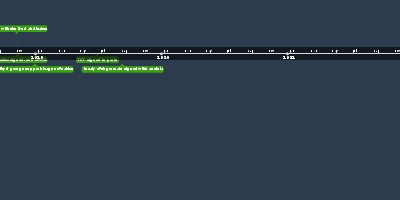29 oct. 1929 - wall street crash ( start of global depression)
Description:
On Black Tuesday, 29 October, 16 million shares were sold on the stock market in Wall Street and the economy collapsed completely.long term factors for the crash:
- overproduction of goods caused prices to fall and many farmers fell into debt because not enough of their product was being bought ( mainly grain was used in creating alcohol but the era of prohibition had caused the decrease in consumption)
-Mass production methods led to supply outstripping demand. People who could afford luxury items, had already purchased them. Also, people in agriculture and the traditional industries, who were on low wages, could not afford consumer goods. This meant workers were laid off, which reduced demand for goods even further.
-American goods were too expensive to buy in Europe because of the tariffs imposed onto them
-Banks were not regulated, and therefore they were not protected against the wall street crash.
-A lot of Americans bought goods on hire purchase. As a result, they owed money to shops and credit companies.
short term causes of the wall street crash:
-Loss of confidence and the sudden fall in prices.
Experts began to see the long term problems in the US economy. In September 1929 these experts began to sell their shares. This created an atmosphere of uncertainty which caused small investors to panic and sell their shares. On 24th October, known as Black Thursday, 12.8 million shares were traded.
-The worst day was the 29th October 1929 . Black Tuesday= When 16 million shares changed hands at very low prices. The stock market had collapsed. Panic selling of shares was an important cause of the Wall Street Crash.
-Share prices rose to unrealistic levels because millions of people were speculating on the stock market. By 1929 there were 20 million share holders compared to 4 million in 1920.
-people could buy shares on credit, this pushed up share prices even higher. As share prices rose higher many gambled even greater sums. They had no way to pay this money back if the prices fell.
effects on Germany:
- The Dawes and Young plan were two loan programs which had helped Germany kickstart its economy again ( although it was short term because the companies which benefitted from it fell into debt), the money was called back
- because the loans were called back; industries lose any financial security, they lower the production of goods, because they lower the production of goods they need less employees, people ,get laid off, people weren't able to spend money on items which leads to a decrease of prices which leads to a decrease in production in goods, people get laid off and this is an ongoing cycle whcich leads to a serious depression
-at the height of the depression in Germany there were 6.1 million unemployed people in January of 1931
- as unemployment rose, the government had to spend more money n unemployment benefits.
- the longer the depression went on the more people lost hope in democracy and they started looking towards more extremist parties which had promised action ( in this case they looked towards the Nazi and the communist parties, both of these parties saw a drastic raise in their member) from hindsight we know which party had gained the most suport and came into power in 1933.
Ajouté au bande de temps:
Date:
29 oct. 1929
Maintenaint
~ Il y a 96 ans
